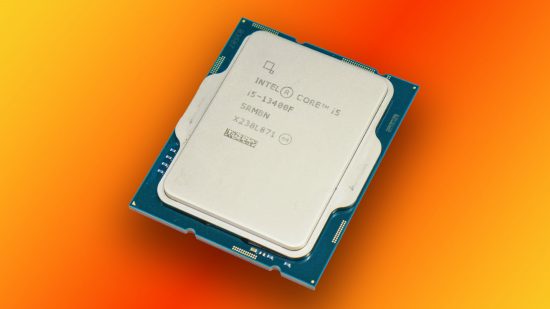Our Verdict
This Intel gaming CPU offers decent performance for the price, and it also benefits from compatibility with both cheap motherboards and DDR4 memory. It lacks clock speed, but it's an ideal foundation for a budget gaming PC.
- Good performance for the price
- Low power draw
- Doesn’t need lavish cooling
- Low clock frequencies
- No L2 cache upgrade
- Only four E-Cores
While the Intel Core i5 13400F clearly has a ’13’ in its name, this budget gaming CPU has more in common with Intel’s last gen Alder Lake CPUs than the current Raptor Lake chips. For a start, this CPU hasn’t received the doubling of L2 cache found in some other 13th gen CPUs, languishing at the same 9.5MB as the Core i5 12600K.
The Intel Core i5 13400F also has the same number of P-Cores and E-Cores as the 12600K, sitting at six and four respectively, while the new Core i5 13600K has eight E-Cores. Specs aside, however, with a surprisingly cheap price on its side, the Core i5 13400F is a prime contender for our best gaming CPU guide.
Why you can trust our advice ✔ At PCGamesN, our experts spend hours testing hardware and reviewing games and VPNs. We share honest, unbiased opinions to help you buy the best. Find out how we test.
Core i5 13400F specs
These are the Intel Core i5 13400F specifications:
| Base clock | P-Core 2.5GHz, E-Core 1.8GHz |
| Max boost clock | P-Core 4.6GHz, E-Core 3.3GHz |
| Core | Raptor Lake |
| Manufacturing process | 10nm |
| P-Cores | 6 |
| E-Cores | 4 |
| Threads | 16 |
| Cache | 20MB L3, 9.5MB L2 |
| Memory controller | Dual-channel DDR4 and DDR5 |
| Socket | LGA1700 |
| TDP / Peak turbo power | 65W / 148W |
The most important figure in the Core i5 13400F specs is those new E-Cores. Comparatively, this CPU’s predecessor, the Core i5-12400F has no E-Cores at all, and this move brings the 13400F’s core count in line with that of the Core i5-12600K.
In case you’re unfamiliar with all of Intel’s suffixes, the ‘F’ at the end of the name means this CPU has no integrated graphics, which means it’s a little cheaper than a non-F chip, but it lacks that backup facility in the event your graphics card is out of action, or if you just don’t need a discrete GPU for your needs. For gamers, though, you’ll be using one of the best graphics cards, so you can save some money by opting for the F version.
At a price of $210, the Core i5 13400F doesn’t really have a competitor in the current CPU lineup, with the Ryzen 5 7600X sitting at $249 and the Ryzen 5 5600X being priced at $159. Needless to say, the Core i5 13400F needs to try to keep up with the former and beat the latter in every test to be worth considering.
Out of the box, the Core i5-13400F will hit an all-core boost on its P-Cores of 4.1GHz, which is 1GHz below the Core i5 13600K’s figures, and it’s also slower than the Core i5 12600K, while its peak lightly-threaded boost of 4.6GHz also trails both CPUs by a wide margin. However, it does have a lower TDP than the Core i5 12600K, at 65W compared to 125W, with the peak turbo power being about the same at 148W.
Core i5 13400F benchmarks
The Core i5 12600K certainly had the measure of the Core i5 13400F in our RealBench tests, but not by the margin its price suggests, with an overall system score of 288,414 compared to 271,519 for the new CPU.
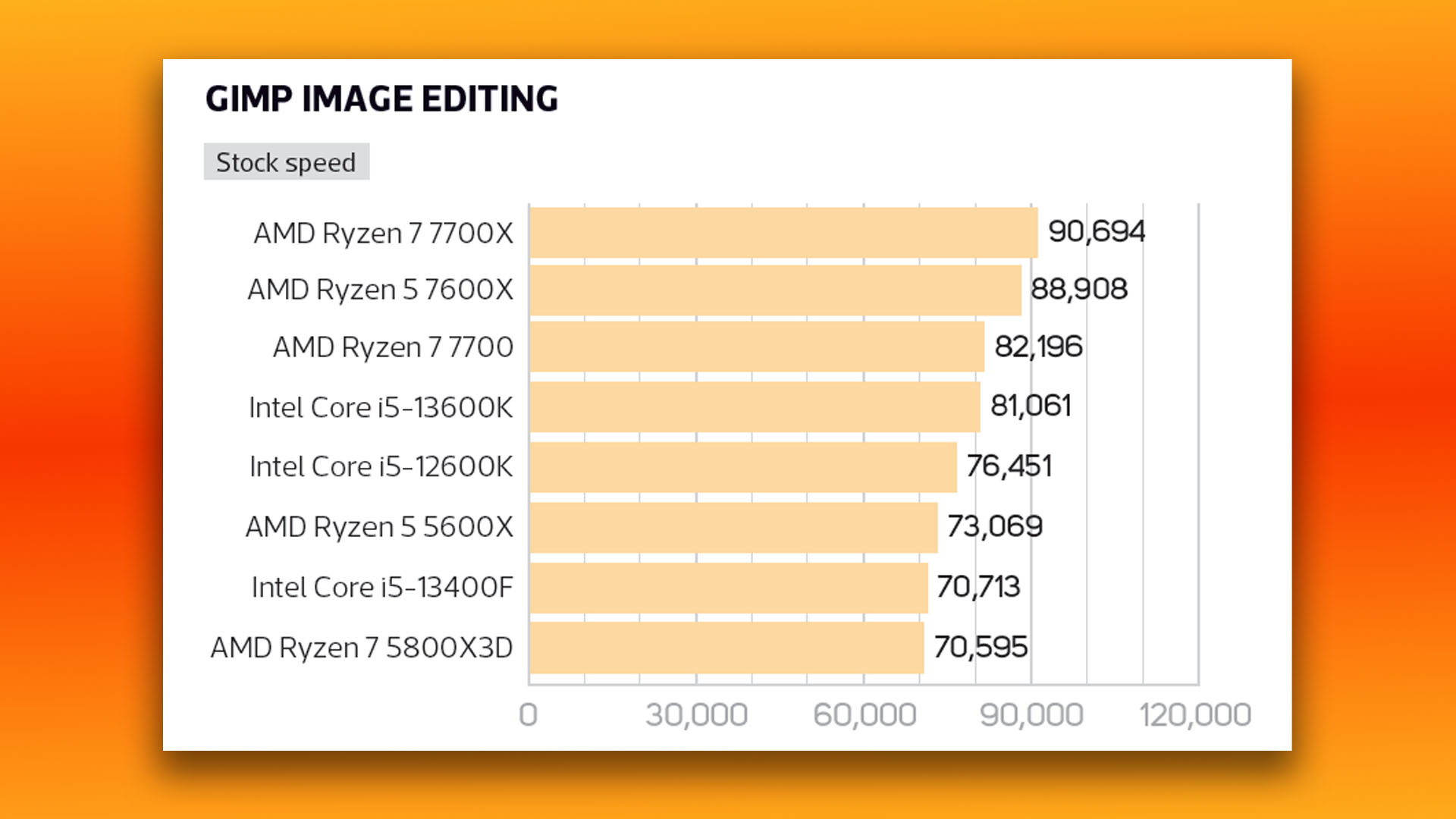
In our GIMP image editing benchmark, which stresses lightly threaded performance, the Core i5 13400F sits near the bottom of the pack, as it only has a 4.6GHz boost clock. However, this is still enough for the 13400F to have the edge over the Ryzen 7 5800X3D, which also suffers from a lack of clock speed.
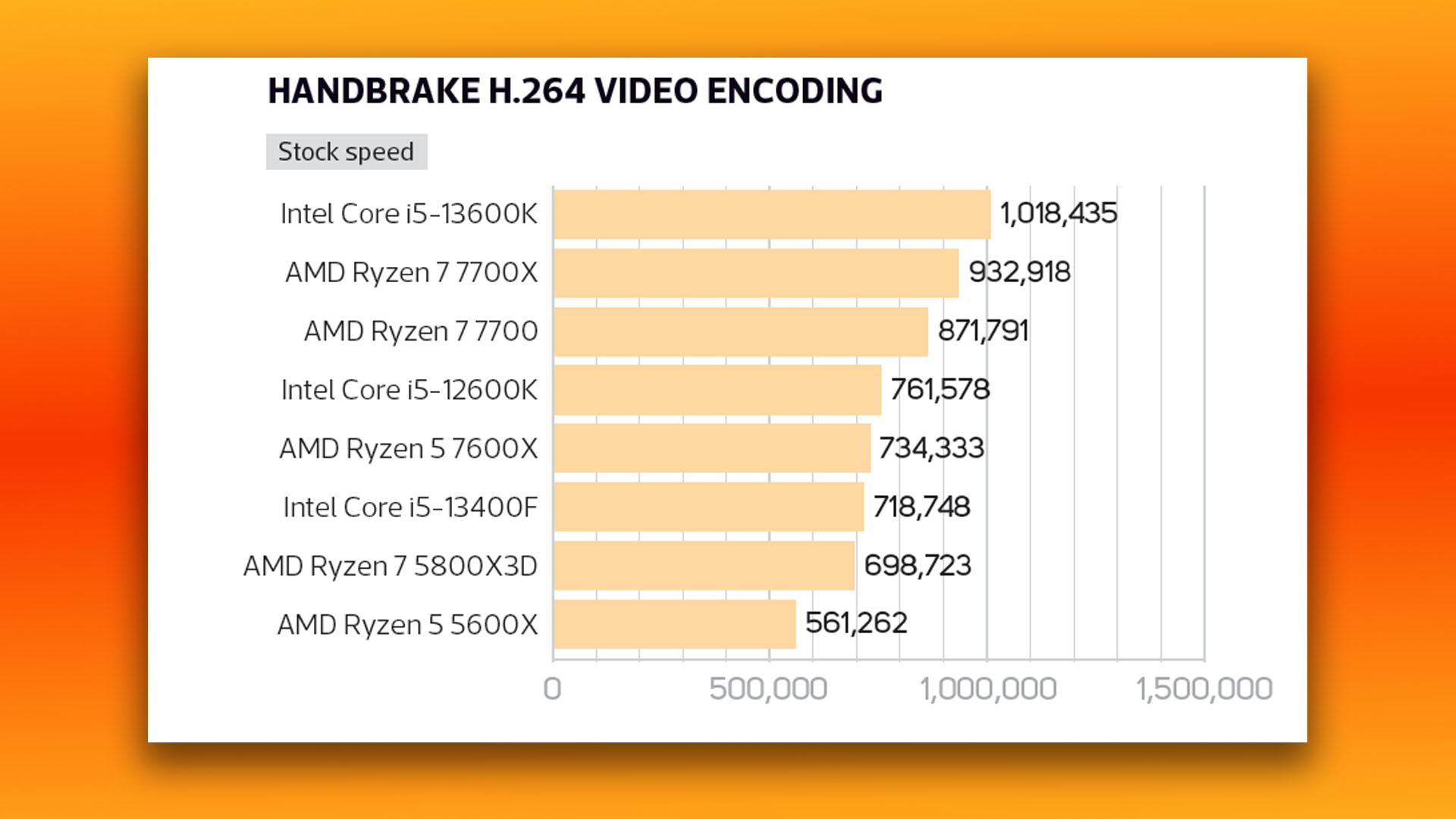
The Core i5 13400F puts in a more compelling showing in our heavily multi-threaded Handbrake video encoding test, where its four E-Cores enabled it to over take the six-core Ryzen 5 5600X, as well as the eight-core Ryzen 7 5800X3D. As a point of comparison, the Core i5 12400F only scores 533,416 in this test, with no help from E-Cores.
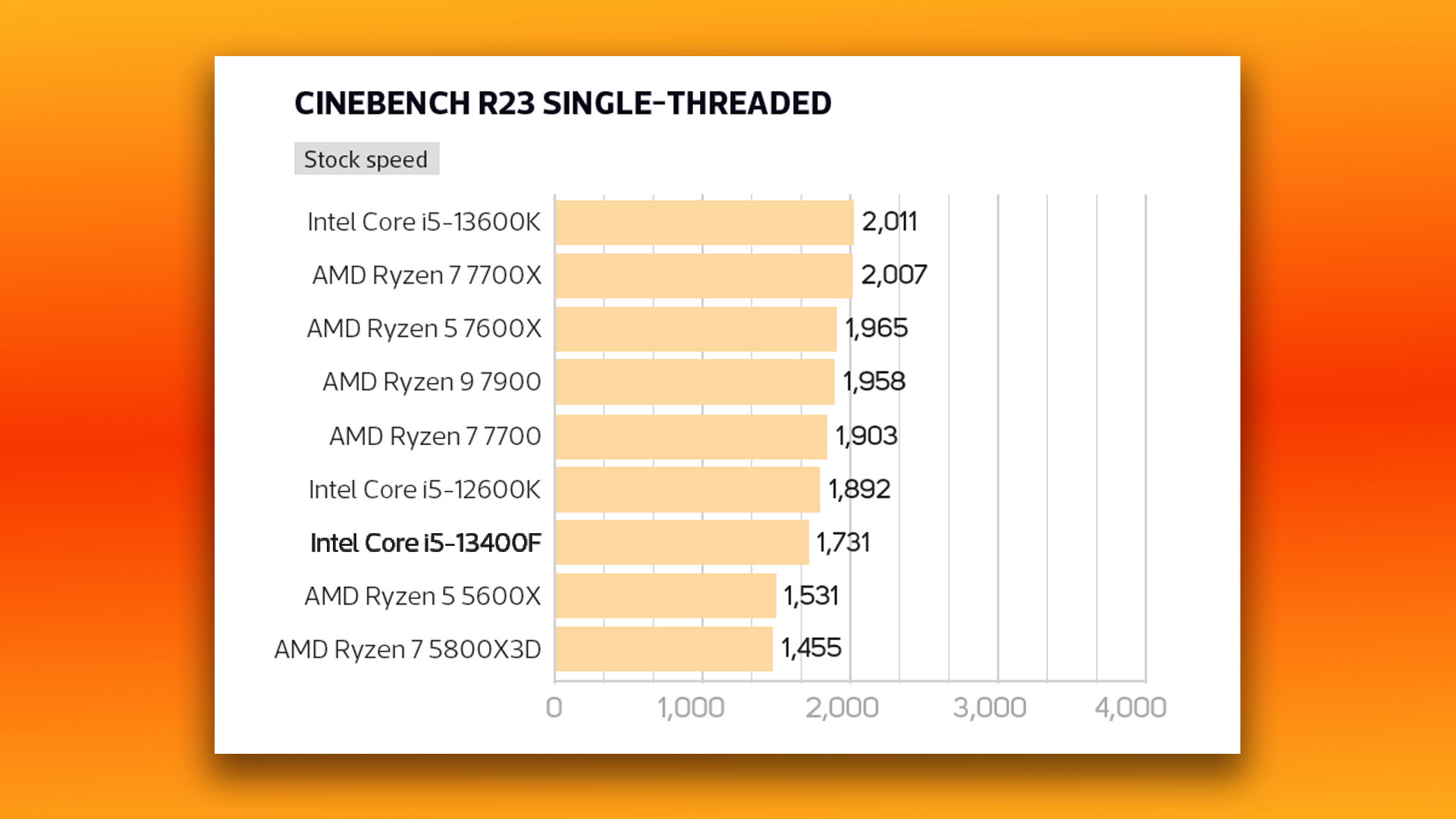
The Core i5 13400F also stayed in front of the Ryzen 5 5600X in the Cinebench single-threaded test, showing the power of Intel’s Raptor Lake P-Cores, even at low clock speeds. However, the Cinebench multi-threaded test enabled this CPU’s 12 cores to really shine, where it overtook the Ryzen 5 7600X.
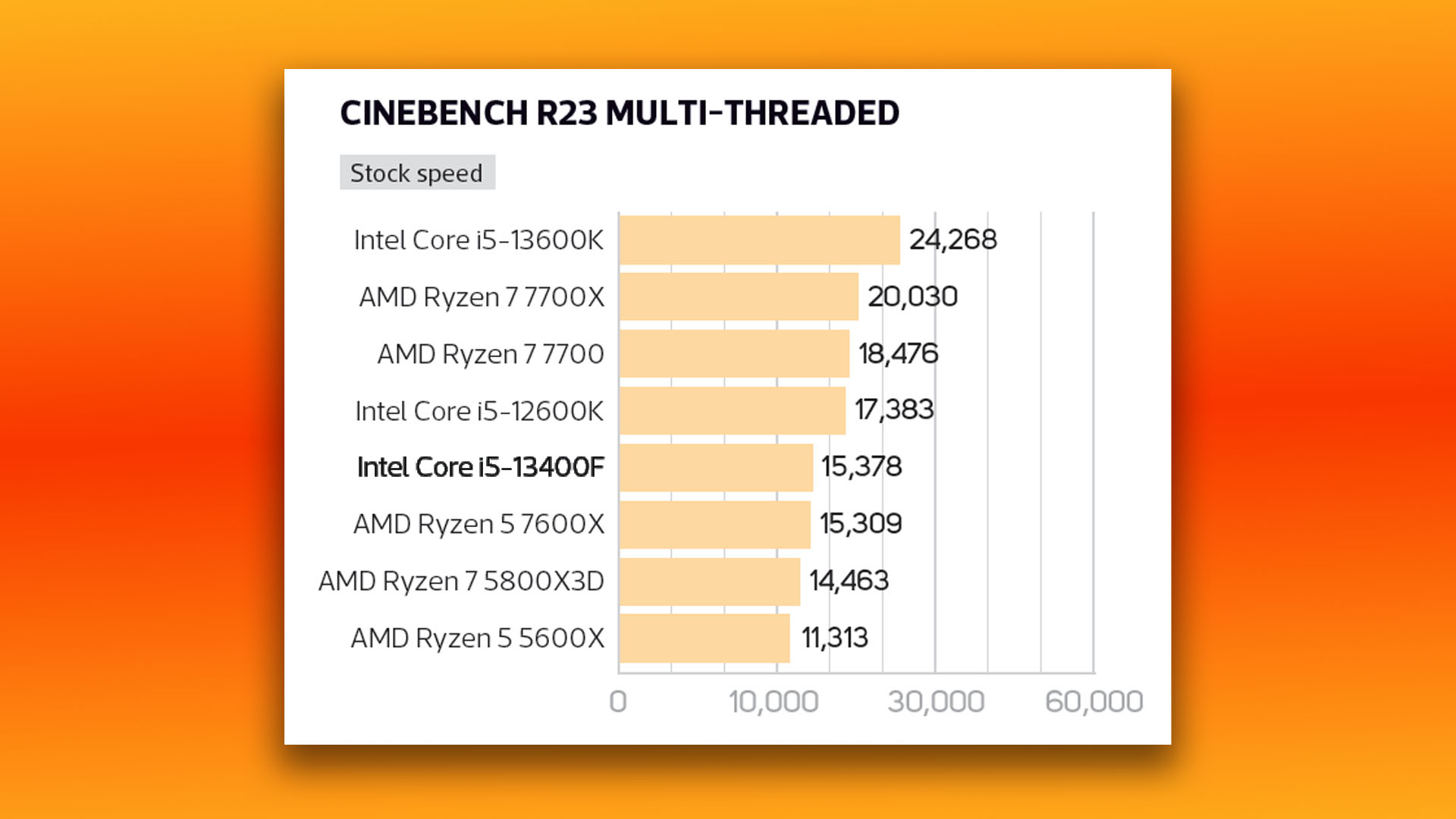
When it comes to gaming performance, the Core i5-13400F lagged behind the other CPUs we’ve recently tested in our Far Cry 6 benchmark, with an average frame rate of 125fps and a 99th percentile minimum frame rate of 93fps. This latter figure was quicker than the result from the Core i5-12600K, although the older CPU’s average of 134fps shows quicker performance overall.
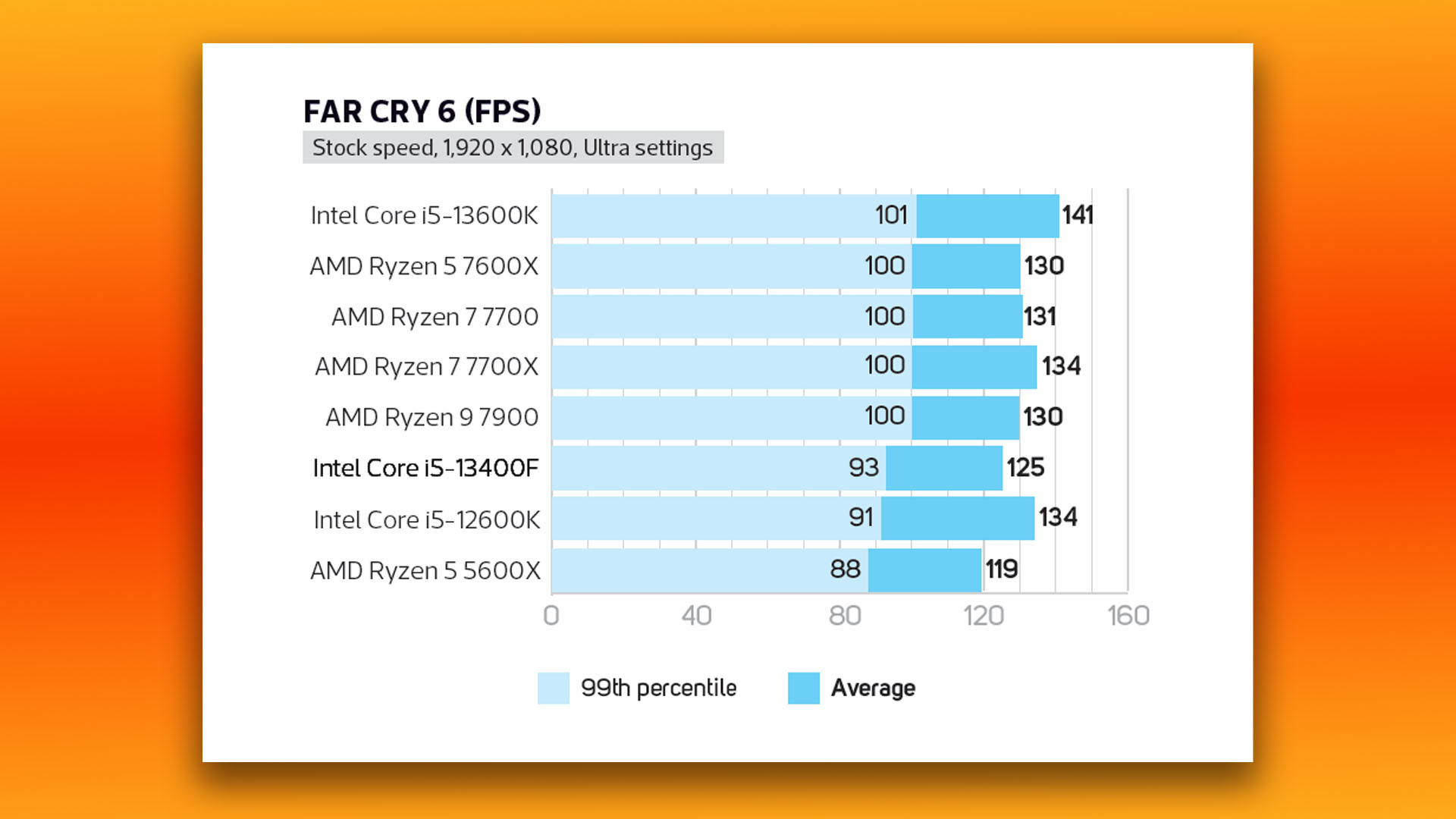
On the plus side, the Core i5-13400F is quicker than the aging Ryzen 5 5600X in our game tests, and it’s not far off the performance of the Ryzen 9 7900 either.
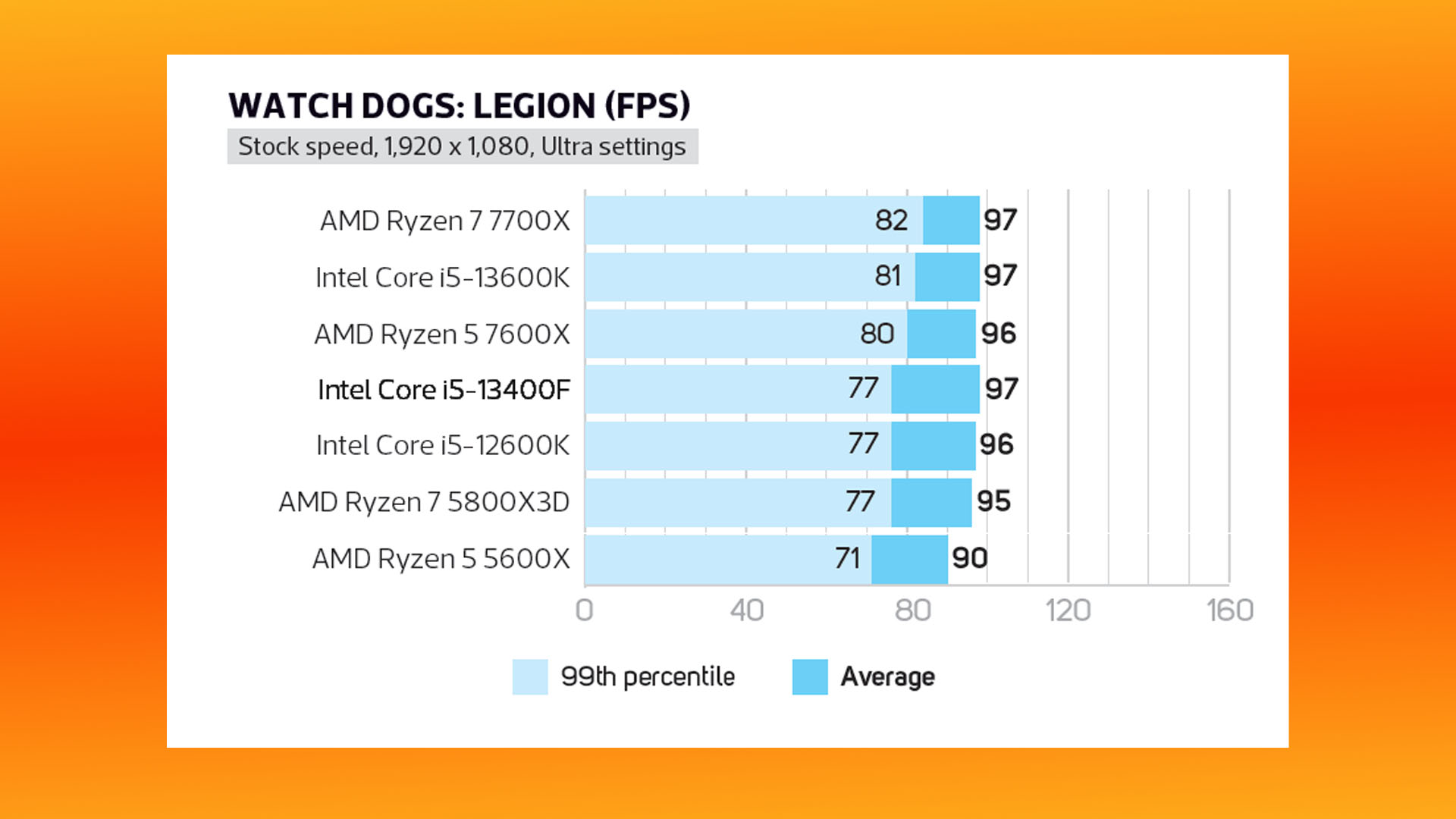
Core i5-13400F power draw
When it comes to power draw, the Core i5 13400F is one of the most power-frugal CPUs we’ve tested recently. Our system drew just 211 W from the mains with this CPU running at full load, compared with 233 W for the Ryzen 5 7600X. However, AMD’s non-X CPUs are even more power-efficient here, partly thanks to their smaller manufacturing process.
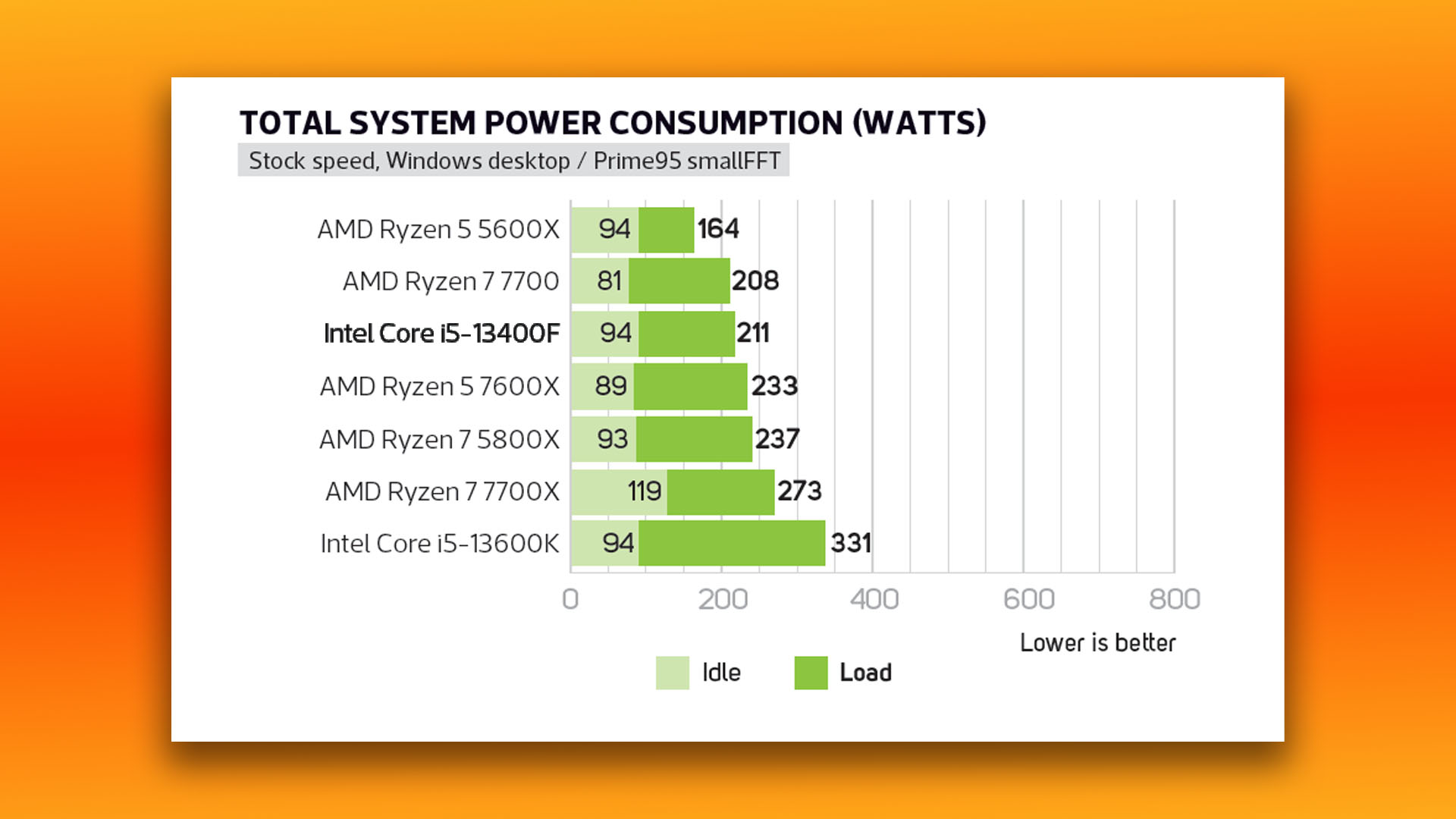
Core i5-13400F price
The 13400F is one of the lowest-tier CPUs in Intel’s 13th range, so it can readily be bought for just over $200. Although this isn’t anywhere near as cheap as the Core i5 12400F, the 13400F’s slightly higher clock speed gives it an edge over the cheaper CPU, and the addition of four E-Cores is also fairly reflected in the premium.
There aren’t many contenders in this price bracket that can really stand up against the 13400F, simply because its price is so low. The Ryzen 5 5600X has a similar price, but is soundly beaten by the Core i5 12400F, while the Ryzen 5 7600X is more expensive and isn’t always quicker.
To compound the situation, you can save yourself some money by running the Core i5 13400F with your existing DDR4 memory, and a cheap 12th gen motherboard if you have one, while AMD’s latest CPUs all require a new motherboard, as well as new DDR5 RAM.
Core i5-13400F conclusion
There are a few points to consider with the Core i5 13400F, with the first being its performance. This is solid, sticking close to the speed of the Core i5 12600K and costing a lot less money, while outpacing the cheaper Ryzen 5 5600X and even bettering the Ryzen 5 7600X in a few tests too.
Critically, Intel has much cheaper motherboards available for its latest chips than AMD, with some B660 models retailing for under $120, and they also support cheap DDR4 memory, while with Socket AM5, you need DDR5 memory that still demands a price premium.
For now, at least, the Core i5 13400F offers excellent value when paired with the right components, and is a much better bet for a mid-range system than AMD’s cheapest Socket AM5 options.
Alternatives
Intel Core i5 12400F
If your budget can’t quite stretch to the Core i5 13400F, the Core i5 12400F will save you a good chunk of money while still being a decent gaming CPU. Its lack of E-Cores means it doesn’t have the multi-threaded clout of the 13400F, but its six P-Cores are plenty powerful enough for most people’s gaming needs.
AMD Ryzen 5 7600X
If you’re planning to build a whole new system anyway, and don’t have any DDR4 RAM to transplant to a new rig, AMD’s latest Zen 4 architecture is mighty in both games and applications. The Ryzen 5 7600X only has six cores, but they’re really powerful. You’ll need some new DDR5 memory and a Socket AM5 motherboard to run this CPU, however.
This post originally appeared on Custom PC, which has been reviewing PC hardware for over 20 years and is now part of PCGamesN. Join our 500k member Facebook group to discuss this review.
